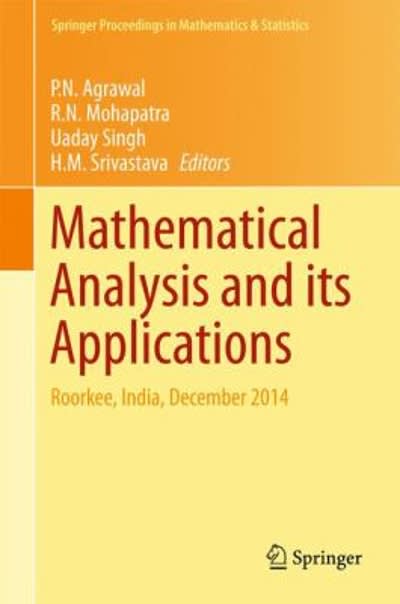Question
Consider a portion of FaMuss dataset below from a study related to human muscle size and strength: Subject ndrm.ch sex age race height weight actn3.r577x












Consider a portion of FaMuss dataset below from a study related to human muscle size and strength:
Subject
ndrm.ch
sex
age
race
height
weight
actn3.r577x
bmi
1
40
Female
27
Caucasian
65
199
CC
33.112
2
25
Male
36
Caucasian
71.7
189
CT
25.845
3
40
Female
24
Caucasian
65
134
CT
22.296
4
125
Female
40
Caucasian
68
171
CT
25.998
5
40
Female
32
Caucasian
61
118
CC
22.293
6
75
Female
24
Hispanic
62.2
120
CT
21.805
7
100
Female
30
Caucasian
65
134
TT
22.296
8
57.1
Female
28
Caucasian
68
162
CT
24.629
9
33.3
Male
27
Hispanic
68.2
189
CC
28.566
10
20
Female
30
Caucasian
62.2
120
CT
21.805
11
25
Female
20
Caucasian
69
131
CT
19.343
12
100
Female
23
African Am
62
108
CT
19.751
13
28.6
Female
24
Caucasian
67.2
158
TT
24.597
14
7.1
Male
50
Caucasian
73
233
CT
30.737
Subject: Participant # (in no specific order?this is not a variable)
sex: Sex of the participant
age: age in years
race: race of the participant
height: Height in inches
weight: Weight in pounds
actn3.r577x: Genotype at the location r577 in ACTN3 gene
ndrm.ch: Percent change in the strength in the non-dominant arm, comparing strength after to before training
bmi: The body mass index
1. Each row in the table above corresponds to a single subject or a study participant (observational unit). The recorded characteristics for each observational unit are referred to as ___________
2. Each column in a data matrix corresponds to a ________________
3.List the variables used in FaMuss dataset
4. List the numerical variables in FaMuss dataset
5. Numerical variables take ______________values.It is reasonable to add ,____________, or take ____________of these values
6. Name the two types of numerical variables:
(i)
(ii)
7. Age is a ______________variable, and percent change in the strength in the non-dominant arm, ndrm.ch, is a _____________variable
8. List the categorical variables in the FaMuss dataset
9. Categorical variables take on values that are ___________or ________________
10. ______________ categorical variables are categorical variables without a natural ordering.
11. List the nominal categorical variables in the dataset FaMuss
12.______________ categorical variables are categorical variables with a natural ordering.
13. If the age of the participants is grouped into 5-year intervals, 15-20, 21-26,
27-32 etc., age will be considered an ____________categorical variable
14. Name the two commonly used measures of center:
(i)
(ii)
15. The label or the symbol for a sample mean is: __________(read as "x-bar")
16. The label or the symbol for the mean of the entire population is: _______
read as "mu".(To insert the symbol for "" in Word, Insert>Symbols> Click on "mu")
17. Find the mean age of the first five study participants in dataset FaMuss.
18. The median is a ____________ _____________of a distribution after the values have been ordered from ______________to ____________. _______% of the data values are below the median and _______% of the data values are above the median, hence median is at the 50th percentile.
19. Find the median age of the first five study participants in dataset FaMuss.
.
21. Consider the ages of kids in the two groups:
(a) the ages of kids on a playground: 2, 1, 12, 6, 10
(b) the ages of kids in a preschool: 3, 4, 3, 3, 4
Comparing the spread in the ages of kids in groups (a) and (b), the ages of kids in group __________have a smaller spread (values are closer to each other), compared to the ages of kids in group ________
20. The _________of a distribution refers to how similar or varied the values in the distribution are to each other
22. The _____________ ________for a set of data describes the typical (or an average) distance between an observation and the mean, and it is used to measure the spread in the data
23. The sample standard deviation is the ____________________of variance
23. ______________is the distance between a single observation and the mean.
24. Complete the following table:
Statistical measure
Symbol
Sample Mean
(pronounced "mu")
Sample Variance
s2
s
Population variance
?2 (pronounced sigma-squared)
?
*We will use Minitab to calculate the measures of the center and the spread in the data.
25. What does it mean when a height of a boy in the fifth grader is at the 90th percentile?
26.
I.The first quartile, Q1 is equivalent to the __________percentile
II.The second quartile, Q2 is equivalent to the __________percentile (The second quartile, Q2, is represented by the median)
III.The third quartile, Q3 is equivalent to the __________percentile
27. The difference between the third quartile and the first quartile (Q3 - Q1) is known as the _________________ range (IQR).
28. The ____________percent of data is included between the first quartile, Q1, and the third quartile, Q3
29. The Interquartile Range (IQR) can be used to measure the _______________ in a data
30.The measures of ________and _____________ are used to numerically summarize the data.
31. List the numbers used for the 5-number summary of data
32. With Minitab, calculate the mean, the median, the standard deviation (SD) and interquartile range (IQR) for the datasets 1 and 2:
Dataset 1: 5, 7, 10, 12, 16, 15, 14
Dataset 2: 0, 2, 10, 13, 1000, 15, 16 (Notice the presence of the extreme values)
Open Minitab>Manually Enter the numbers in C1 and C2> Stat>Basic Statistics>Display Descriptive Statistics>Double Click C1 Set 1>Double click C2 Set 2> Statistics>Select Mean>Standard deviation>Median>Interquartile Range>OK>OK>Click on Minitab output>Right click>Copy as a picture>Copy results below












Step by Step Solution
There are 3 Steps involved in it
Step: 1

Get Instant Access to Expert-Tailored Solutions
See step-by-step solutions with expert insights and AI powered tools for academic success
Step: 2

Step: 3

Ace Your Homework with AI
Get the answers you need in no time with our AI-driven, step-by-step assistance
Get Started


